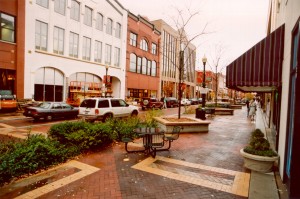The second in a series of posts highlighting our special climate change edition of The Huron River Report

While climate change action on the international and national scene may seem stalled, activity on the local level may provide a way to push the process from the ground level up.
What are local communities doing to combat and adapt to climate change?
- Twenty-two southeast Michigan cities have agreed to propel each of their local governments to reduce energy consumption from non-renewable sources by 25 percent by 2015 (compared to 2005 levels). These cities have also pledged to cut energy consumption from all other sources—such as residents, business, and school districts—by 5.14%
- Plans are underway for rail service from Detroit to Ann Arbor, and also a commuter train connecting Ann Arbor to Brighton and Howell.
- Traverse City has undergone a “smart growth” transformation, redeveloping its downtown, participating in a regional “Grand Vision” plan with surrounding communities, and converting a 100-year old mental institution, the Northern Michigan Asylum, into a mixed-use neighborhood called The Village at Grand Traverse Commons.
- Several communities in the watershed have active land preservation programs to purchase natural areas and farmland, or purchase their development rights for permanent preservation. The City of Ann Arbor, Ann Arbor Township, Scio Township, and Washtenaw County all participate.
For more details on what local communities can do to reduce climate change and its impacts, check out our climate change edition of the Huron River Report.
Also, check out this posting about climate change on a local level on the Michigan Suburbs Alliance web site.



